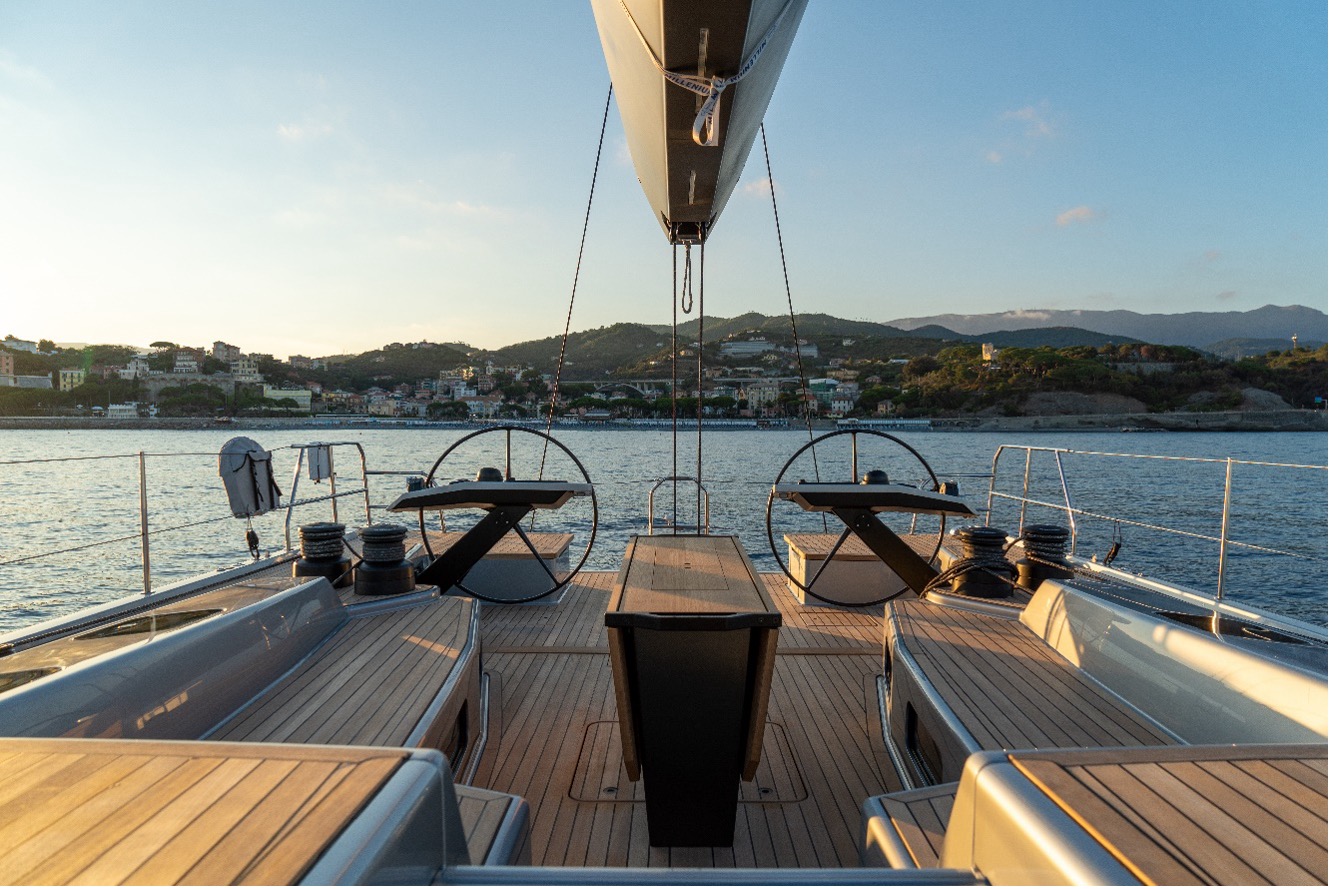At the Boot Düsseldorf 2017, from a certain position of pavilion 16, it was possibile to see the ClubSwan 50 and the new Hallberg-Rassy 44. Two completely different boats: a modern monotype in the first case; a large cruiser featuring a central cockpit and a very traditional design in the second one.
However, in addition to the flag of their manufacturers, what these boats have in common is the double rudder blade. And this feature is also shared by the new Oyster 675, the latest proposal of the English shipyard known for its elegant reliable blue water cruisers, and the RM 970, the last creation of the French shipyard which, on the contrary, focuses on functionality and essential design.
You know, the double rudder blade is increasingly more appreciated. But if this choice is good for projects as diverse as the above-mentioned ones, why isn’t it present on all boats? In other words: Which boats is the double rudder suited to?

Let’s start from a fact: today, boats are wider than 50 years ago and, above all, they are completely different in shape, especially as regards aft sections.
“ Current sterns are very wide, a 40-foot boat is like a 80′ one of 50 years ago cut in half: it’s like they finish truncated” – explains the designer Lorenzo Argento – “so, when they list, even on the stern, the centre of the boat tends to move away from water and this requires that the central blade must be very long to work efficiently”

But there’s a downside: when an appendix has the so-called high-efficiency profile, that is narrow and streamlined, is more sensitive to the surrounding flow change; in other words, it loses its laminar motion and real efficiency more easily.
“If we see the waterlines of a clipper – says another famous designer, Sergio Abrami – we’ll notice that the rudder is a trim tab, a sort of keel spoiler: the boat direction was determined by sails, boats were steered with sails and the rudder only was to decide eventual adjustments”.
“Moreover, when the boat lists – claims Argento – the bow raises reducing the wet part of the rudder and its efficiency”.

A possible solution is to move the single rudder forwards, which has the effect of having a nervous boat.
Bringing the rudder and the centerboard closer to each other makes the yacht much easier to handle but also with less course holding. This is why nautical engineering introduced the double blade.
“Or, better, the double blade has come back – specifies the designer Sergio Abrami – In ancient times and in the Middle-Ages, ships had topside rudders, which were essentially oars, and not a central rudder. The latter, in fact, appeared only more recently”
The single blade is a modern invention. “With similar length, the parts I need to build two rudders aren’t as big as the half of those used to build a single blade but they’re smaller, which contributes to reduce the total weight. On the other hand, what doubles is the work necessary in the production phase together with the necessary maintenance“, explains Abrami. Moreover, in order to work well, blades must be close to the transom and in a very external position. This increases the risk of air suctions and the subsequent cavitation of the appendix which, finally, can’t direct the boat” .
Argento says: ” The way the boat is used, rather than its sizes, provides the best solution to adopt. For example, the WallyCento Magic Carpet Cubed was built with a double rudder but, after two seasons, she was changed and equipped with a single blade since engineers realized that a single wheel was the best solution for the use of this boat. If, on the contrary, we foresee a cruise where sailing close to wind is only a very little part of the regatta because what we want to focus on are performing speeds – and, consequently, their shapes are very wide and with the possibility to place two blades very close to topsides – such as for a Imoca 60 or a racer like the 100’ Comanche, thus a double blade is good. The boat will list as foreseen, the downwind blade will stay vertical while the upwind one will be out of water reducing friction. It is no coincidence that on boats like Alex Thomson’s Hugo Boss, the upwind wheel is tilted like on a Olympic racing boat”.
This type of boats are called monomarans, rather than motorboats.

It’s like they are two half -boats, a right and a left one, longitudinally linked. One is designed to sail listed by 20 degrees starboard, the second 20 degrees to the left. So, there’s a wheel for the straboard boat and another for the left one.


But if you aren’t looking for extreme performances, a single blade will be enough.
“Have an experiment next time you’re on your boat: put your hand into the water and feel how much friction it produces. Well, the second rudder is something offering the same type of additional friction; so, if isn’t necessary for the above-mentioned reasons, it becomes damaging”, says Argento.

The double blade can also make things difficult in terms of planning and installation. First, we have to take into account what is generally called “Ackermann’s angle” in the car: during a a bend, the innermost wheel makes an angle narrower than that of the external one because it has less road to travel. The same thing happens on board: blades haven’t to move parallel but with different angles otherwise one of them won’t work with a laminar motion but it will be pulled into the water putting a brake on both the boat speed and the course change.

But double blades certainly bring an advantage: they increase the stowage room available on the stern. The two rudder axis free the central part of the hull to the benefit of tender garage, for example. Thus, this layout is sometimes chosen for reasons of comfort and not for a real nautical efficiency.
So, what’s better? A single or a double rudder blade? It depends: if you have a boat featuring a wide stern and which lists a lot and has to sail fast, we suggest a double rudder blade. In all the other cases, a single blade is perfect.
























